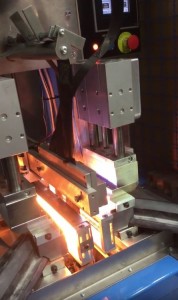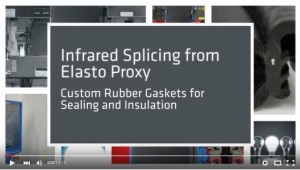Infrared Splicing for Rubber Gaskets

Infrared splicing provides a cost-effective alternative to rubber molding for larger gaskets. Plus, this innovative splicing technique is faster and more energy-efficient than hot splicing.
Infrared splicing uses infrared (IR) light and polyethylene (PE) film to join lengths of rubber into custom gaskets. A form of electromagnetic radiation, IR emits heat that melts or softens the film’s adhesive, which is typically acrylic. This permanent adhesive sticks to each length of rubber, and the film joins the two pieces together with strong, reliable bonds that resist water and weather. Applications for IR spliced gaskets include the rubber gate seals used in water treatment facilities.
How Infrared Splicing Works
Infrared splicing is a semi-automatic process that’s performed on a single-unit joining press. At Elasto Proxy, our IR splicing machine features a distance knife, infrared heating elements, splicing mold, foot pedal, and digital display. PE film is fed from a roll, cut with the knife, and heated with IR light. The infrared splicer that we use supports PE films with a width of 50, 60, or 70 mm and a thickness of 75 to 300 grams. Watch this YouTube video to see how our skilled production personnel create IR spliced gaskets. (more…)









